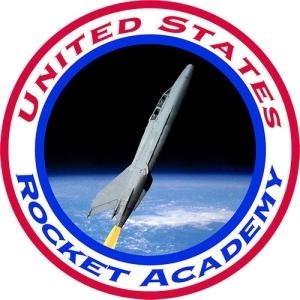Training, Evaluating New Medical Technology At NASTAR Center
Citizens in Space announced that four astronaut candidates have completed Suborbital Scientist training at the National AeroSpace Training and Research (NASTAR) Center, a premier aviation and space training, research, and education facility aimed at optimizing human performance in extreme environments. Maureen Adams, Lt. Col. Steve Heck (USAF-ret.), Michael Johnson, and Edward Wright have been selected by Citizens in Space to fly as payload operators on the XCOR Lynx spacecraft.

The four citizen-astronaut candidates completed multiple centrifuge runs during the three-day training course, simulating g-forces that will be encountered during a suborbital spaceflight. They also completed altitude-chamber training at simulated altitudes up to 28,000 feet and a rapid-decompression exercise. "This physiological training is essential preparation for the functions we will perform during our missions," Colonel Heck said. "To perform our tasks as payload operators, we must be familiar with every aspect of the flight environment in both normal and emergency situations. I am happy to say that all of our citizen-astronaut candidates completed NASTAR training with flying colors."
In addition to physiological training, the group conducted an evaluation of advanced biomedical sensors manufactured by Sotera Wireless, Inc. of San Diego. Edward Wright and Michael Johnson evaluated the sensors during four centrifuge runs at up to 6.2g. The evaluation was conducted under the direction of Dr. Ravi Komatireddy, a physician researcher and president of Vital Space. Steve Heck and Maureen Adams helped attach and monitor the sensors.
The ViSi Mobile device from Sotera Wireless is a next-generation, wireless vital-sign monitoring system. "We demonstrated how the ViSi Mobile device might be used in a spaceflight or simulated-spaceflight environment, with no disruption or discomfort for the wearer," Wright said. "This could open the door for using the device to collect actual data during our future training as well as operational space missions."

"This was an initial evaluation to determine the feasibility of using the ViSi Mobile device in a high-g environment," said Dr. Komatireddy. "In the past, the most advanced medical technology came out of the space program and was spun off to the private sector. Today, that process is operating in reverse. Low-cost off-the-shelf technology like the ViSi Mobile allows us to collect data that, in the past, required expensive, custom-built aerospace medical devices."
In 2012, Dr. Komatireddy and colleague Dr. Paddy Barrett tested the ViSi Mobile device on a Zero-G aircraft flight sponsored by NASA's Flight Opportunities Program. During that flight, the device was tested in regimes ranging from 0 to 2 g. The centrifuge provided a much more extreme g-force environment. "We have now tested the ViSi Mobile device through the full range of acceleration environments that will be encountered on a suborbital spaceflight," Dr. Komatireddy said. "This is an important step toward proving the usability and usefulness of the device for future spaceflight participants."
Citizens in Space, a project of the United States Rocket Academy, has purchased 10 flights on the XCOR Lynx spacecraft, which it is making available to the citizen-science community. Citizens in Space plans to fly 100 citizen-science experiments and 10 citizen astronauts as payload operators. The first five citizen-astronaut candidates have been selected and are currently in training.
 ANN's Daily Aero-Term (04.26.24): DETRESFA (Distress Phrase)
ANN's Daily Aero-Term (04.26.24): DETRESFA (Distress Phrase) ANN's Daily Aero-Linx (04.26.24)
ANN's Daily Aero-Linx (04.26.24) Airborne 04.22.24: Rotor X Worsens, Airport Fees 4 FNB?, USMC Drone Pilot
Airborne 04.22.24: Rotor X Worsens, Airport Fees 4 FNB?, USMC Drone Pilot Airborne 04.24.24: INTEGRAL E, Elixir USA, M700 RVSM
Airborne 04.24.24: INTEGRAL E, Elixir USA, M700 RVSM Airborne-NextGen 04.23.24: UAVOS UVH 170, magni650 Engine, World eVTOL Directory
Airborne-NextGen 04.23.24: UAVOS UVH 170, magni650 Engine, World eVTOL Directory




